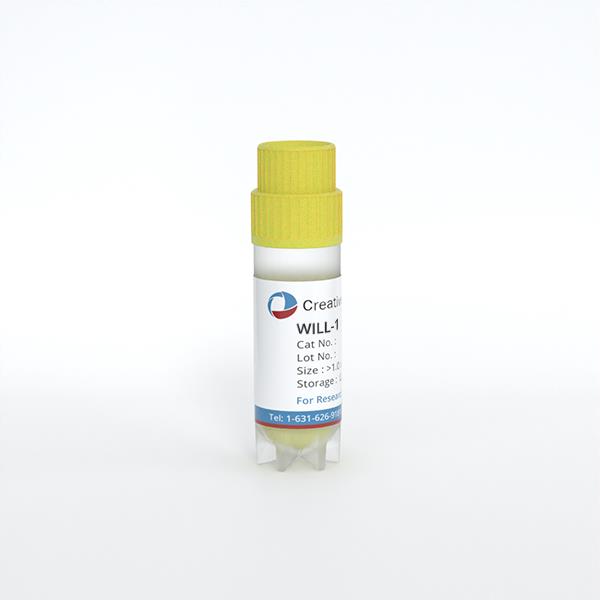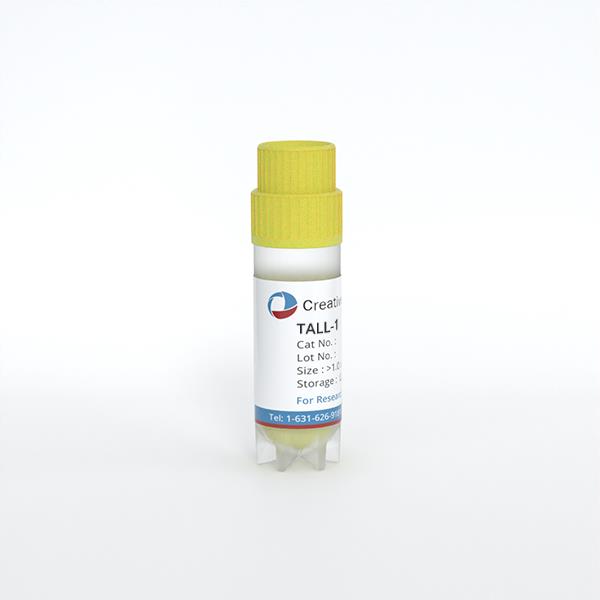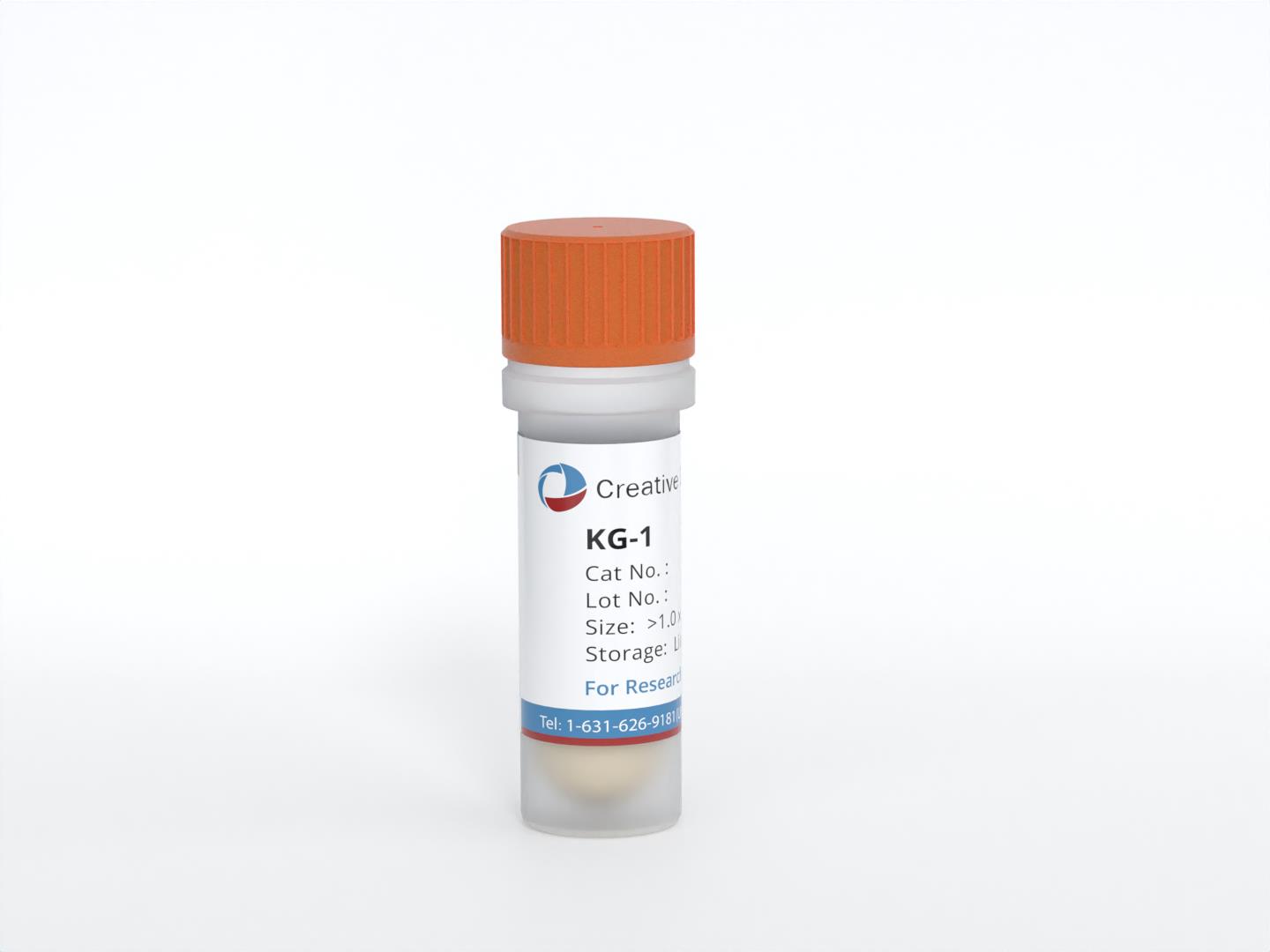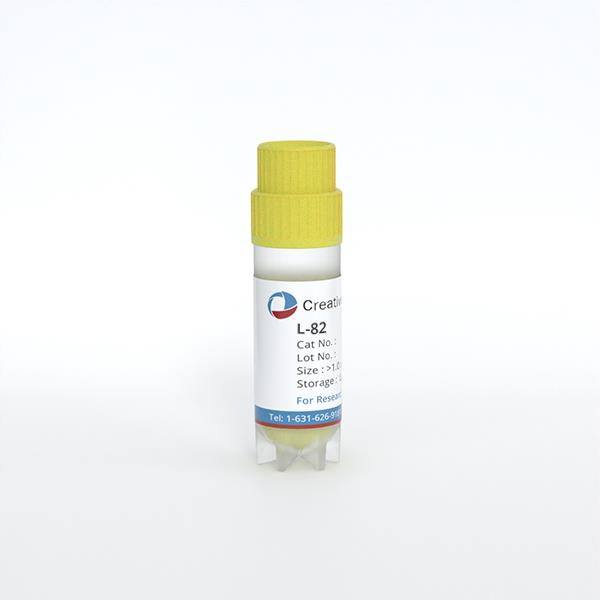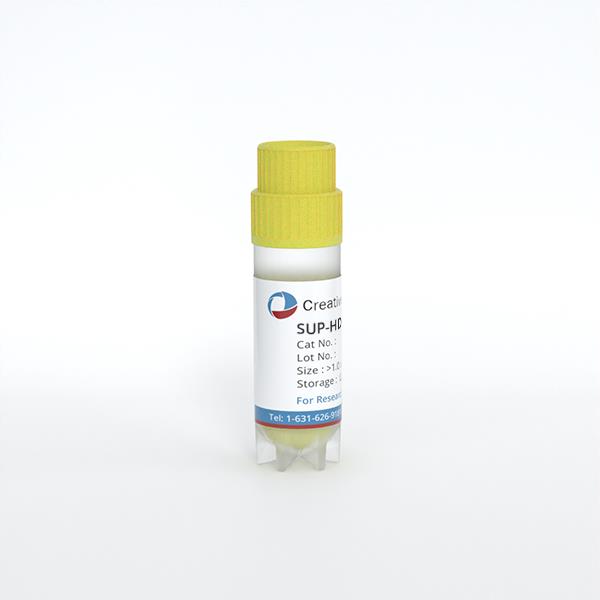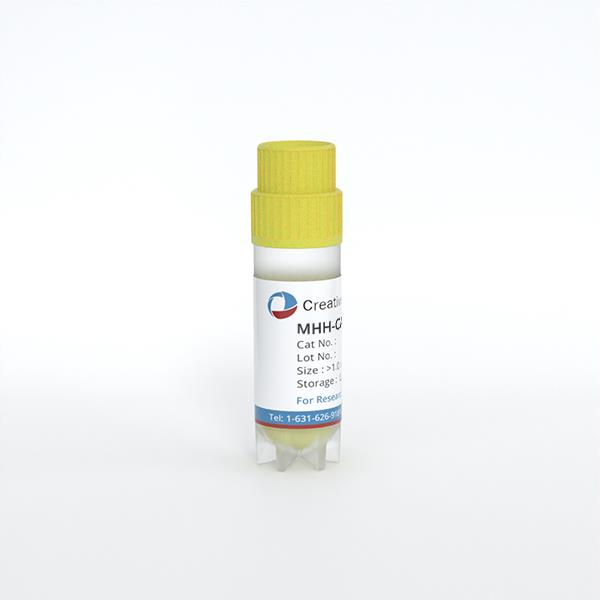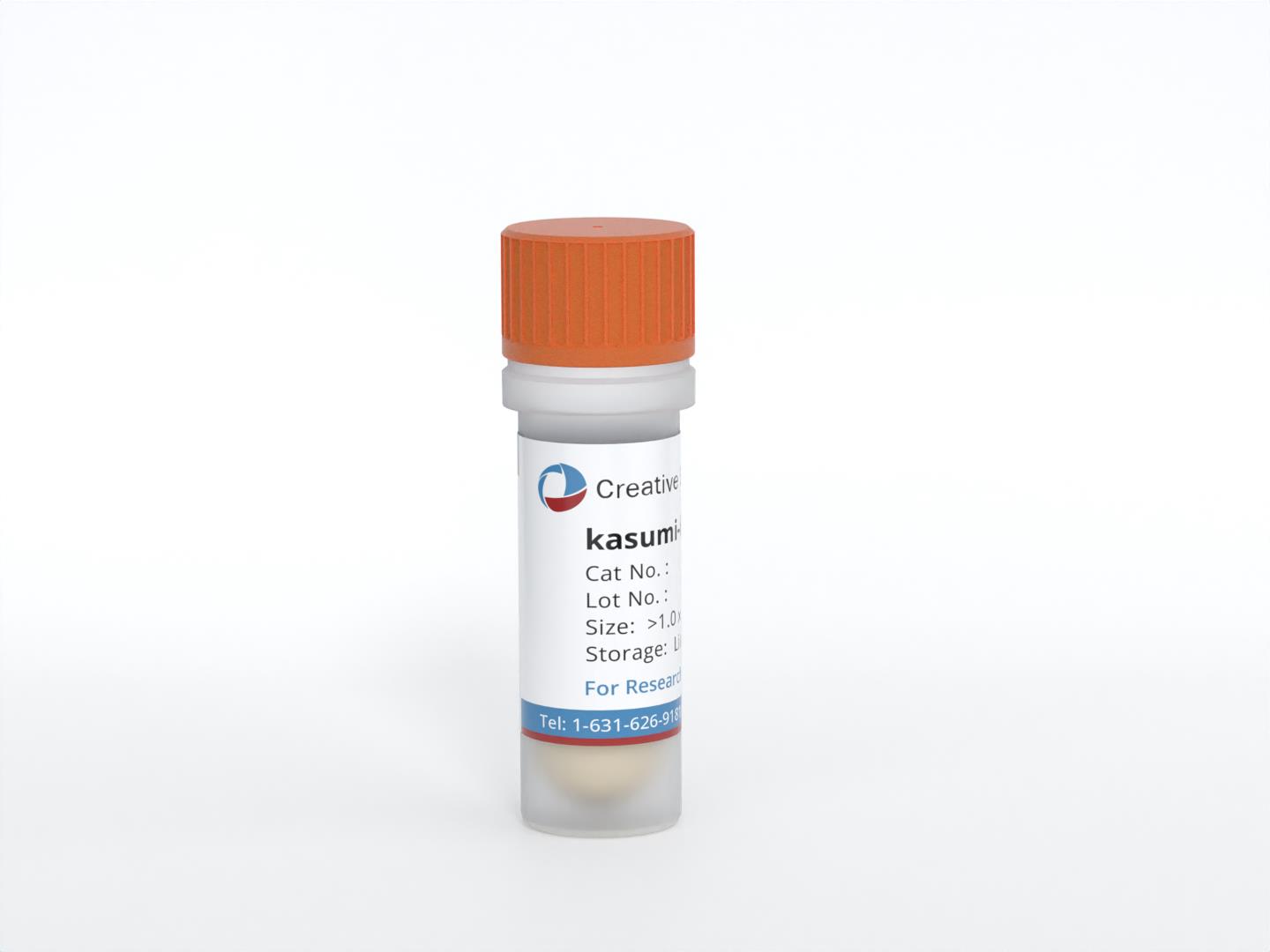
Kasumi-6
Cat.No.: CSC-C6873J
Species: Homo sapiens (Human)
Source: Blood; Peripheral Blood
Morphology: Myeloblast
- Specification
- Background
- Scientific Data
- Q & A
- Customer Review
- Documents
The Kasumi-6 cell line is a well-known human acute myeloid leukemia (AML) cell line that has been extensively studied in the field of leukemia research. It was established from the bone marrow of a 7-year-old Japanese boy diagnosed with AML.
One of the distinctive features of the Kasumi-6 cell line is the presence of a dominant negative mutation in the C/EBP alpha (CCAAT/enhancer-binding protein alpha) gene. C/EBP alpha is a transcription factor that plays a critical role in regulating the differentiation and function of myeloid cells, including granulocytes and monocytes.
The specific mutation in the Kasumi-6 cell line results in a nonfunctional or impaired C/EBP alpha protein, interfering with its normal regulatory functions. This disruption of C/EBP alpha activity can lead to defects in myeloid cell differentiation and maturation, contributing to the development and progression of AML.
The Kasumi-6 cell line has been widely used as a model system to investigate the molecular mechanisms underlying AML pathogenesis and the role of C/EBP alpha in myeloid cell differentiation. Researchers have utilized this cell line to study the impact of the dominant negative C/EBP alpha mutation on cellular processes, gene expression profiles, and signaling pathways associated with leukemogenesis.
Establishment of the Kasumi-6 Cell Line
The Kasumi-6 cells had been increasing continuously in liquid suspension culture for 22 months, with a doubling time of about 55 hr. The original leukemic cells relapsed leukemic cells, and the Kasumi-6 cells (Fig. 1 A, B, and C) presented features of immature blasts with abundant cytoplasm and fine granules. The leukemic cells at diagnosis were positive for MPO and CD34, but the relapsed leukemic cells and the Kasumi-6 cells were negative for both. Staining for NBE, PAS, and NAP was not tested for the cells at diagnosis or relapse, but tested negative for the Kasumi-6 cells. Both the original leukemic cells and the Kasumi-6 cells were positive for CD33, CD13, CD11b, c-kit, and HLA-DR, but negative for CD3, CD14, CD19, and CD41. Cytoplasmic MPO was positive for the original leukemic cells, but it could not be detected in the Kasumi-6 cell line. Both the relapsed leukemic cells and the Kasumi-6 cells had the same karyotype: 45, XY, 9, add(12)(p11), add(13)(p11).
An identical shifted band was detected by PCR-SSCP analysis in the original leukemic cells at diagnosis, the leukemic cells at relapse, and the Kasumi-6 cells (Fig. 2). On the other hand, Kasumi-1, -3, and -5 cell lines, which were established from other individuals with M2, M0, and L2 FAB-type leukemia, respectively, displayed a normal SSCP pattern (Fig. 2). DNA sequencing analysis of the shifted bands identified a G to C transversion at nucleotide 1,063, resulting in an R305P amino acid change. Both SSCP and DNA sequencing analyses revealed that the wild-type and mutant alleles were present in all samples, indicating that the mutation was hemizygous. This mutation occurred in the fork or hinge region between the DNA-binding basic domain and the leucine zipper dimerization domain. The presence of a helical-destabilizing residue such as proline is predicted to have an impact on the function of the C/EBPα protein.
 Fig. 1 Morphology of the (A) original leukemic cells, (B) relapsed leukemic cells and (C) Kasumi-6 cells. (Asou H, et al., 2003)
Fig. 1 Morphology of the (A) original leukemic cells, (B) relapsed leukemic cells and (C) Kasumi-6 cells. (Asou H, et al., 2003)
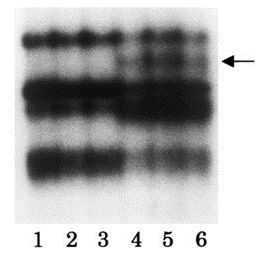 Fig. 2 Mutation of the C/EBPα gene in the patient sample and Kasumi-6 cell line. (Asou H, et al., 2003)
Fig. 2 Mutation of the C/EBPα gene in the patient sample and Kasumi-6 cell line. (Asou H, et al., 2003)
Characterization of Kasumi Leukemia Cell Line Genomes
Leukemia genomes are primarily characterized by abnormal karyotypes, which often include the formation of a fusion gene. Ten Kasumi cell lines established in Japan, including five that were previously unknown, have been characterized by SNP microarray and targeted sequencing.
Copy number alterations were identified in nine of the ten cell lines, except for Kasumi-4. Gains and losses were observed in 6 and 8 cell lines, respectively (Table 1). Trisomy 10 was observed in Kasumi-1 and 6, demonstrating a characteristic feature of AML-M2. Loss of heterozygosity (LOH) resulting in one copy of alleles did not occur in a whole chromosome but in partial regions. DNA size compared with normal diploid was calculated from 98.4 to 104.7% for the three AML cell lines and from 98.8 to 99.7% for the five BCP-ALL cell lines (Fig. 3). The largest difference among the 10 cell lines was found in Kasumi-6, which increased its DNA size to 280.2 Mb. SNP profiles revealed that UPD, equivalent to copy neutral LOH consisting of homozygous DNA copies, occurred in 7 cell lines.
Hotspot mutations were identified in 7 cell lines (Table 2). TP53 mutations were detected in Kasumi-1 and 6, exhibiting 17p LOH in the array profiles, resulting in a 100% allele frequency. FMS-like tyrosine kinase 3 internal tandem duplication (FLT3-ITD) was detected in Kasumi-6 and -10, derived from elderly AML and infant ALL patients, respectively. Kasumi-1 has been used as a KIT mutant AML model, which was detected at 4q12 with 79.3% variant frequency under 4 copies, indicating duplications of the mutated allele. Fusion transcripts were detected in five cell lines (Table 2). A very high level of TCF3-PBX1 expression was observed in Kasumi-2, compared with other fusions. NUP98-RAP1GDS1 has been identified in Kasumi-5, but it was not covered as a target in the panel.
Table 1. Quantitative assessment of large-scale genomic changes. (Kasai F, et al., 2020)
| Kasumi-3 | Kasumi-1 | Kasumi-6 | Kasumi-4 | Kasumi-5 | Kasumi-2 | Kasumi-7 | Kasumi-8 | Kasumi-9 | Kasumi-10 | |
| Gain regions | 2 | 11 | 6 | 0 | 1 | 2 | 1 | 0 | 0 | 0 |
| Loss regions | 10 | 11 | 2 | 0 | 3 | 10 | 9 | 5 | 6 | 0 |
| DNA size | -94.7 | 85.6 | 280.2 | 0 | -59.3 | -16.3 | -42.9 | -73.6 | -62.5 | 0 |
| UPD regions | 12 | 1 | 7 | 0 | 1 | 0 | 1 | 0 | 1 | 1 |
| SGA regions | 24 | 23 | 15 | 0 | 5 | 12 | 11 | 5 | 7 | 1 |
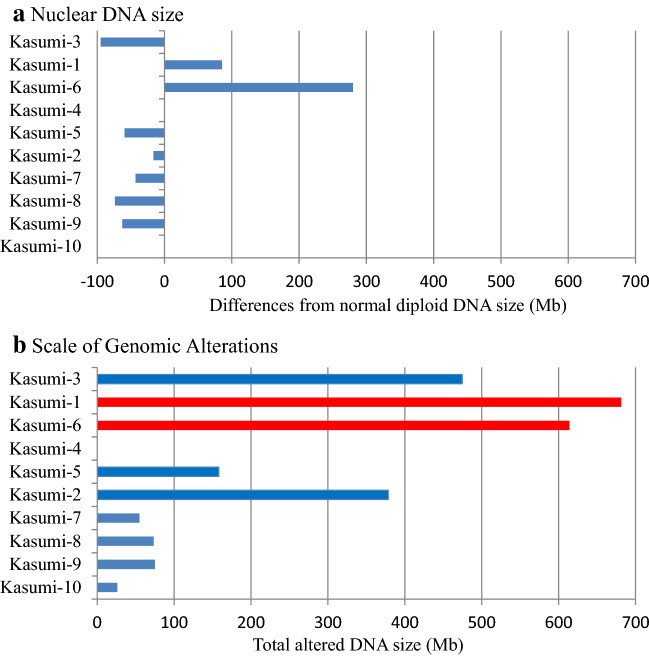 Fig. 3 Assessment of tumor genomes. (Kasai F, et al., 2020)
Fig. 3 Assessment of tumor genomes. (Kasai F, et al., 2020)
Table 2. Genomic features as a reference panel. (Kasai F, et al., 2020)
| Kasumi-3 | Kasumi-1 | Kasumi-6 | Kasumi-4 | Kasumi-5 | Kasumi-2 | Kasumi-8 | Kasumi-10 | |
| Fusion gene | - | RUNX1-RUNX1T1 | - | BCR-ABL1 | NUP98-RAP1GDS1 | TCF3-PBX1 | BCR-ABL1 | KMT2A-MLLT1 |
| Hotspot mutation | ETV6 (12p13.2) | KIT | WT1, STAG2, CEBPA | GATA2 | - | HRAS | ETV6(12p13.2) | - |
Ask a Question
Write your own review
- You May Also Need
- Adipose Tissue-Derived Stem Cells
- Human Neurons
- Mouse Probe
- Whole Chromosome Painting Probes
- Hepatic Cells
- Renal Cells
- In Vitro ADME Kits
- Tissue Microarray
- Tissue Blocks
- Tissue Sections
- FFPE Cell Pellet
- Probe
- Centromere Probes
- Telomere Probes
- Satellite Enumeration Probes
- Subtelomere Specific Probes
- Bacterial Probes
- ISH/FISH Probes
- Exosome Isolation Kit
- Human Adult Stem Cells
- Mouse Stem Cells
- iPSCs
- Mouse Embryonic Stem Cells
- iPSC Differentiation Kits
- Mesenchymal Stem Cells
- Immortalized Human Cells
- Immortalized Murine Cells
- Cell Immortalization Kit
- Adipose Cells
- Cardiac Cells
- Dermal Cells
- Epidermal Cells
- Peripheral Blood Mononuclear Cells
- Umbilical Cord Cells
- Monkey Primary Cells
- Mouse Primary Cells
- Breast Tumor Cells
- Colorectal Tumor Cells
- Esophageal Tumor Cells
- Lung Tumor Cells
- Leukemia/Lymphoma/Myeloma Cells
- Ovarian Tumor Cells
- Pancreatic Tumor Cells
- Mouse Tumor Cells
